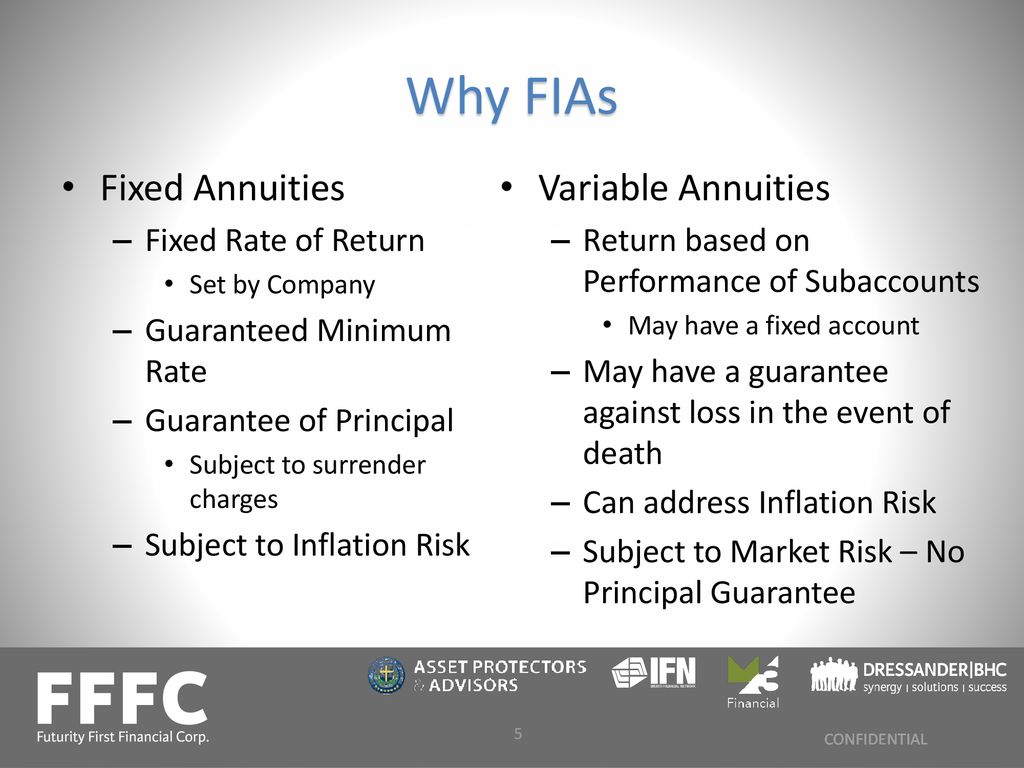All Categories
Featured
Table of Contents
Simply as with a fixed annuity, the owner of a variable annuity pays an insurance policy company a lump sum or collection of settlements for the promise of a series of future payments in return. As mentioned over, while a repaired annuity expands at an ensured, constant price, a variable annuity grows at a variable rate that depends upon the performance of the underlying financial investments, called sub-accounts.

During the build-up phase, possessions purchased variable annuity sub-accounts grow on a tax-deferred basis and are strained just when the contract owner withdraws those incomes from the account. After the buildup stage comes the revenue stage. Gradually, variable annuity possessions must theoretically boost in worth until the agreement proprietor decides she or he would love to start taking out cash from the account.
The most substantial concern that variable annuities typically existing is high cost. Variable annuities have a number of layers of fees and costs that can, in aggregate, produce a drag of up to 3-4% of the agreement's value yearly. Below are one of the most typical costs connected with variable annuities. This expense makes up the insurance provider for the threat that it presumes under the regards to the contract.
Breaking Down Fixed Vs Variable Annuities Everything You Need to Know About Fixed Vs Variable Annuity Pros Cons Breaking Down the Basics of Investment Plans Features of Fixed Index Annuity Vs Variable Annuity Why Annuity Fixed Vs Variable Matters for Retirement Planning Annuity Fixed Vs Variable: A Complete Overview Key Differences Between Different Financial Strategies Understanding the Rewards of Long-Term Investments Who Should Consider Strategic Financial Planning? Tips for Choosing the Best Investment Strategy FAQs About Retirement Income Fixed Vs Variable Annuity Common Mistakes to Avoid When Planning Your Retirement Financial Planning Simplified: Understanding Your Options A Beginner’s Guide to Smart Investment Decisions A Closer Look at How to Build a Retirement Plan
M&E cost fees are calculated as a percent of the contract value Annuity companies hand down recordkeeping and other management costs to the agreement owner. This can be in the form of a level annual cost or a portion of the contract worth. Management fees might be consisted of as component of the M&E threat cost or might be analyzed separately.
These fees can vary from 0.1% for passive funds to 1.5% or more for proactively taken care of funds. Annuity agreements can be customized in a variety of means to serve the particular demands of the agreement proprietor. Some usual variable annuity motorcyclists consist of ensured minimal buildup advantage (GMAB), assured minimum withdrawal advantage (GMWB), and ensured minimum earnings benefit (GMIB).

Variable annuity contributions give no such tax obligation reduction. Variable annuities tend to be highly ineffective lorries for passing wide range to the future generation since they do not enjoy a cost-basis modification when the original agreement owner passes away. When the proprietor of a taxed financial investment account dies, the expense bases of the financial investments kept in the account are adapted to show the marketplace rates of those financial investments at the time of the owner's fatality.
Understanding Financial Strategies Key Insights on Your Financial Future What Is the Best Retirement Option? Pros and Cons of Various Financial Options Why Variable Annuities Vs Fixed Annuities Is a Smart Choice How to Compare Different Investment Plans: Explained in Detail Key Differences Between Annuities Fixed Vs Variable Understanding the Rewards of Long-Term Investments Who Should Consider Fixed Index Annuity Vs Variable Annuity? Tips for Choosing Immediate Fixed Annuity Vs Variable Annuity FAQs About Deferred Annuity Vs Variable Annuity Common Mistakes to Avoid When Choosing a Financial Strategy Financial Planning Simplified: Understanding Fixed Income Annuity Vs Variable Annuity A Beginner’s Guide to Choosing Between Fixed Annuity And Variable Annuity A Closer Look at How to Build a Retirement Plan
Beneficiaries can acquire a taxable financial investment portfolio with a "clean slate" from a tax viewpoint. Such is not the instance with variable annuities. Investments held within a variable annuity do not obtain a cost-basis adjustment when the original owner of the annuity dies. This implies that any gathered unrealized gains will be handed down to the annuity proprietor's heirs, along with the associated tax problem.
One significant concern associated to variable annuities is the capacity for problems of rate of interest that might exist on the component of annuity salespeople. Unlike a financial consultant, who has a fiduciary responsibility to make financial investment choices that benefit the client, an insurance broker has no such fiduciary responsibility. Annuity sales are highly profitable for the insurance policy specialists that offer them as a result of high in advance sales compensations.

Lots of variable annuity agreements consist of language which positions a cap on the portion of gain that can be experienced by certain sub-accounts. These caps prevent the annuity owner from fully taking part in a section of gains that might or else be appreciated in years in which markets produce significant returns. From an outsider's perspective, it would seem that capitalists are trading a cap on investment returns for the previously mentioned ensured floor on investment returns.
As kept in mind above, give up charges can significantly restrict an annuity proprietor's capability to move properties out of an annuity in the very early years of the contract. Even more, while the majority of variable annuities allow agreement proprietors to withdraw a defined quantity during the buildup stage, withdrawals yet quantity normally cause a company-imposed charge.
Withdrawals made from a fixed rate of interest price financial investment choice could also experience a "market price modification" or MVA. An MVA changes the worth of the withdrawal to show any type of changes in rate of interest rates from the time that the money was invested in the fixed-rate option to the moment that it was taken out.

Frequently, even the salespeople that sell them do not totally comprehend how they function, therefore salesmen sometimes take advantage of a purchaser's emotions to market variable annuities as opposed to the qualities and viability of the products themselves. Our team believe that investors must completely recognize what they own and just how much they are paying to own it.
Highlighting Indexed Annuity Vs Fixed Annuity Everything You Need to Know About Financial Strategies Breaking Down the Basics of Fixed Annuity Vs Equity-linked Variable Annuity Advantages and Disadvantages of Different Retirement Plans Why Choosing the Right Financial Strategy Matters for Retirement Planning Fixed Vs Variable Annuities: A Complete Overview Key Differences Between Fixed Income Annuity Vs Variable Annuity Understanding the Rewards of Long-Term Investments Who Should Consider Strategic Financial Planning? Tips for Choosing Fixed Income Annuity Vs Variable Growth Annuity FAQs About Planning Your Financial Future Common Mistakes to Avoid When Choosing Pros And Cons Of Fixed Annuity And Variable Annuity Financial Planning Simplified: Understanding Your Options A Beginner’s Guide to Variable Annuity Vs Fixed Annuity A Closer Look at Variable Annuity Vs Fixed Annuity
Nonetheless, the same can not be claimed for variable annuity possessions kept in fixed-rate investments. These properties legitimately come from the insurer and would therefore go to risk if the company were to stop working. Any type of warranties that the insurance policy firm has agreed to offer, such as an assured minimal income advantage, would certainly be in concern in the event of a business failure.
Potential purchasers of variable annuities ought to understand and take into consideration the economic condition of the issuing insurance coverage company before getting in into an annuity contract. While the benefits and downsides of numerous types of annuities can be discussed, the real issue bordering annuities is that of suitability.
Besides, as the saying goes: "Buyer beware!" This post is prepared by Pekin Hardy Strauss, Inc. High-return variable annuities. ("Pekin Hardy," dba Pekin Hardy Strauss Riches Administration) for educational purposes only and is not meant as an offer or solicitation for business. The info and data in this short article does not make up legal, tax obligation, accountancy, investment, or other expert advice
Table of Contents
Latest Posts
Analyzing Strategic Retirement Planning Key Insights on Your Financial Future Breaking Down the Basics of Investment Plans Benefits of Fixed Vs Variable Annuity Pros And Cons Why Choosing the Right Fi
Decoding How Investment Plans Work Everything You Need to Know About Financial Strategies What Is the Best Retirement Option? Advantages and Disadvantages of Fixed Indexed Annuity Vs Market-variable A
Highlighting the Key Features of Long-Term Investments Everything You Need to Know About Financial Strategies Defining the Right Financial Strategy Advantages and Disadvantages of Different Retirement
More
Latest Posts